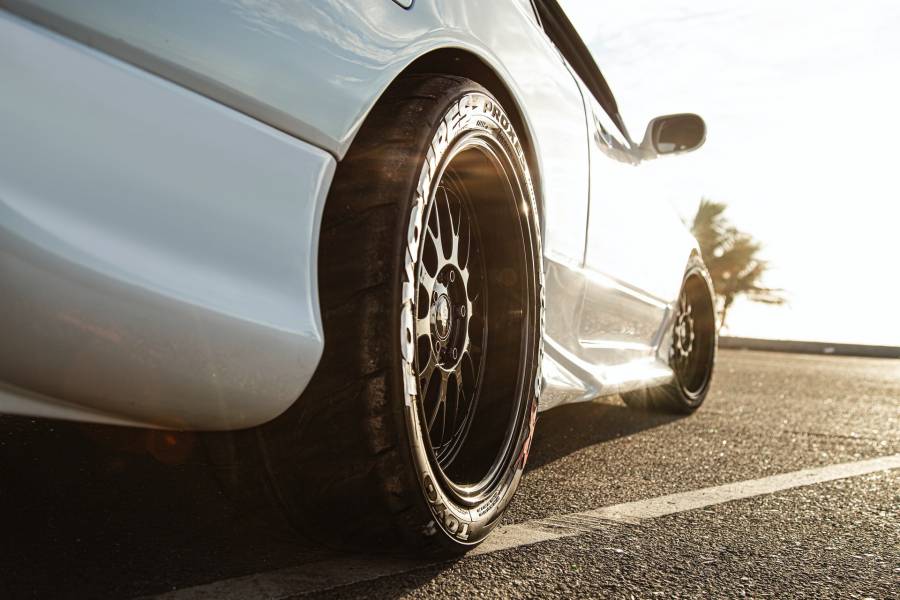Quick Navigation
Wheel speed sensors are an integral part of any anti-lock braking system. They work by sending data back to the anti-lock braking system (ABS) computer regarding each tire’s speed.
The ABS computer then compares this data and determines if one or more tires are locking up or beginning to slip.

If so, the ABS computer will selectively apply the brakes to minimize the amount of slip or lock up. When a wheel speed sensor goes bad, it can cause all sorts of problems.
In this article, we’ll look at what can happen when a wheel speed sensor fails.
How Does A Wheel Speed Sensor Fail?
Several different things can go wrong with a wheel speed sensor, including:
Loose Wire Connection
Sometimes the electrical wiring to the sensors comes loose after lots of wear and tear on the vehicle.
It causes intermittent problems where the computer will get incorrect information about how fast each wheel is moving.
Broken Wire
Wheel speed sensor wires become frayed over time. If the computer detects a problem with one of the wires, it can ignore or stop using data from that particular sensor altogether.
It creates an incorrect reading about how fast each tire is spinning.
Damaged Coil
Sometimes the coils inside the sensors wear out after several years of use. It causes incorrect readings about how fast each wheel is rotating and how much pressure is in each tire.
Defective Sensor
Early models of this component have problems with the outer protective seal that surrounds the magnetic core.
When this happens, water can get into the sensor, causing it to short out and fail.
How Do You Tell Which Wheel Speed Sensor Is Bad?
You can usually tell which wheel speed sensor is causing trouble by listening to your vehicle.
If it’s making a strange noise, the culprit is probably a defective component that needs to be replaced.
Testing A Wheel Speed Sensor
If you suspect that there may be a problem with one of the sensors on your vehicle, you can check it yourself using a multimeter.
Although it’s possible to do this test yourself, you’re better off getting the car checked by a professional.
A good mechanic will know exactly how to identify and replace faulty sensors on your vehicle.
What Happens When A Wheel Speed Sensor Goes Bad?
Like many other sensors in your car, wheel speed sensors are prone to failure over time. If a wheel speed sensor goes bad, it can trigger a whole host of issues with your car.
A defective wheel speed sensor can lead to all sorts of problems. Here is what happens when a wheel speed sensor goes bad:
Warning Lights
The computer will usually flag trouble when the sensor fails by turning on warning lights.
It can range from a simple check engine light to more specific ones for the particular part of the vehicle where the malfunctions are occurring.
The specific warning lights related to a defective wheel speed sensor will vary widely depending on the model of your vehicle.
Here are some of the most common warning lights related to this component:
ABS Light
Vehicles with ABS (Automatic Braking System) will usually turn on this light when there is a problem with one of the wheel speed sensors.
This component is used to determine how fast each wheel is moving and which direction it’s turning in and how much pressure is inside each tire.
If the ABS determines a problem with one of the sensors, this light will turn on.

Traction Or Stability Control Light
A defective speed sensor can result in the ECU failing to get accurate information about each tire’s speed.
The computer uses information about how fast each wheel moves to control acceleration, braking, and steering. If it gets incorrect data, the light will illuminate.
Problems With Traction Control And Stability Control
The wheel speed sensor plays a crucial role in the traction and stability control systems.
The wheel speed sensor monitors road wheel speed and sends the info to the vehicle’s body control module (BCM). It then gets sent to the electronic control unit (ECU).
The ECU uses this information to determine whether or not one or more wheels are slipping.
If a wheel is slipping, for example, during acceleration, it will signal the engine control module (ECM) to reduce the amount of fuel going to the engine, which will reduce power to the wheels.
It is done because too much power to a slipping wheel can cause tire spin and loss of control.
If one of your wheel speed sensors goes bad, you’ll need to replace it immediately.
Otherwise, your traction control system won’t be able to do its job correctly, which can cause accidents and injuries.
ABS Braking Stops Working
Wheel speed sensors serve as an interface between the vehicle and its antilock braking system.
These sensors monitor the rotating speed of the wheels and relay that information to the ABS computer.
This information is then used to regulate brake pressure during hard stops, allowing for better control of the vehicle when under heavy braking.
When a wheel speed sensor fails or has issues, it usually disables ABS brakes altogether.
The Speedometer And Odometer Fail To Work
A defective speed sensor can prevent your vehicle’s computer from collecting the data it needs to calculate how fast you’re moving accurately.
If this happens, both the odometer and speedometer will typically fail or do strange readings.
Car Goes Into “Limp Mode” Or Fails To Shift Gears
A faulty wheel speed sensor can drastically reduce the performance of your car’s engine.
If there is a problem with these sensors, it may cause the engine to shut off entirely or go into “limp mode.”
It will also happen if the ECU doesn’t get accurate information about which gear you are in, so it may put your vehicle in an inappropriate gear for driving.
This jerky shifting can damage your car’s transmission if it continues for too long.
No Cruise Control
Cruise control systems use the wheel speed sensor signal to maintain a constant vehicle speed.
When you first turn on your cruise control, it considers how fast you’re going at that moment, then maintains that exact speed by sending a signal to your throttle body (usually through a servo).
For example, if you’re going 60 mph, your cruise control will ensure your engine delivers enough power to keep you at 60 mph as long as your foot is off the accelerator pedal.
If your wheel speed sensor goes bad, your cruise control will no longer be able to tell how fast you’re going (or even if you’re going at all).
Instead of maintaining a constant speed, it will readjust your throttle every few seconds, which can be very dangerous if you’re driving on the highway.
Takeaway
The wheel speed sensor is a crucial part of your vehicle. If you’re having problems with one or more of these, don’t ignore it!
Please take it to an automotive specialist for repairs as soon as possible. It will ensure your safety, passengers, and everyone else on the road.

With comprehensive experience in writing exceptional quality articles and blogs about cars and related stuff, Daniel is one of the finest bloggers and a hardcore car lover we have. He is an ASE certified technician with an across-the-board experience of 10 years in the industry. He could not help tinkering with anything he got his hands on from a young age, which led to his remarkable career in the automotive repair industry.
When he is not under any hood, you can find him on the water or in the woods to pursue his passion for hunting and fishing. He has been writing for multiple sectors and is a regular contributor to several publications.
He currently owns a Nissan 300ZX TT and a Pearl Yellow but plans to upgrade it to 550 HP. His favorites include the Koenigsegg CCX and Lamborghini Diablo 6.0 VT, but for him, the Ferrari 360 Spider is one of the sexiest cars that exists to date.
Being an avid world traveler, he has spent most of his time analyzing the automotive markets, latest technology, and local favorites to enhance his knowledge base. He is currently living in North Caroline, where it’s all about food and coffee and, of course, cars.






